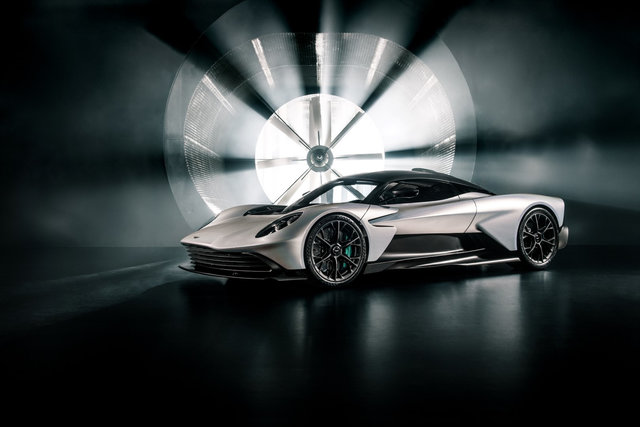Owning an Aston Martin means more than acquiring a luxury vehicle—it means creating a personal design statement that reflects your individual taste...


Aston Martin's engineering teams transferred specific Formula 1 technologies to the Valhalla's development program, implementing direct technical solutions from their racing division. Their methodologies extend beyond basic performance metrics, encompassing structural engineering, aerodynamic optimization, and dynamic control systems that define the vehicle's capabilities.
Formula 1 Simulator Development
The Valhalla's development process marks a departure from traditional supercar testing methods. Aston Martin's engineering team completed 90% of the vehicle's dynamic characteristics and setup in advanced simulators before any physical prototypes hit the road. Formula 1 drivers Lance Stroll and Fernando Alonso provided direct input during development, pushing the virtual car to its limits and helping calibrate its responses. This approach allows for rapid refinement of handling characteristics across countless scenarios without the time and resource constraints of physical testing.
Advanced Carbon Fiber Construction
The Valhalla's carbon fibre structure employs manufacturing techniques previously reserved for Formula 1 cars. Engineers developed a proprietary blend of Resin-Transfer-Moulding and F1-derived autoclave technology to create its passenger cell. This combination produces exceptional structural rigidity while maintaining minimal weight. The manufacturing process differs from conventional carbon fibre construction, using specialized layup techniques and curing processes that optimize strength in critical areas while reducing mass where possible.
Intelligent Active Aerodynamics
Hidden beneath the Valhalla's sculptured exterior lies an advanced active aerodynamic system that adapts to driving conditions. The front wing employs a DRS-style system that can lay flat to reduce drag or angle upward to generate downforce. Small slotted louvers ahead of the rear wheels function as miniature diffusers, pulling air from beneath the car to enhance stability. This system generates over 600kg of downforce at 240km/h, actively managing the balance between grip and straight-line speed.
Race-Inspired Ergonomic Design
The Valhalla's cockpit architecture incorporates Formula 1 ergonomic principles in subtle but significant ways. A raised false floor elevates the driver's heels, improving pedal control and feedback. This floor space doubles as housing for electronic modules, maximizing interior packaging efficiency. The carbon fiber bucket seats recline at a more aggressive angle than typical supercars, mimicking Formula 1 seating positions while maintaining road car comfort and visibility.
Sophisticated Powertrain Architecture
The hybrid powertrain system employs three electric motors in an innovative configuration. Two motors on the front axle enable individual wheel torque vectoring, providing precise control over power delivery to each front wheel. The third motor integrates directly into the transmission, supporting the twin-turbo V8 engine while handling reverse gear duties. This elimination of a mechanical reverse gear reduces transmission weight and complexity, demonstrating how hybrid technology can enhance both performance and efficiency.
The Valhalla's engineering systems showcase practical applications of Formula 1 development processes in road vehicle design. Each technical solution serves multiple functions - reducing mass, improving structural integrity, or enhancing vehicle dynamics. These integrated systems work together to deliver measurable performance improvements while maintaining the functional requirements of a road-legal supercar.
Owning an Aston Martin means more than acquiring a luxury vehicle—it means creating a personal design statement that reflects your individual taste...
Aston Martin has just unveiled the DB12 S, and it's already making waves in the luxury performance world. If you've been following the British...
Few engines in automotive history carry the prestige and presence of a naturally aspirated V12. Fewer still wear the winged badge of Aston Martin....